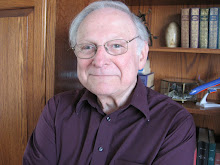There are at least 200 genres and sub-genres of the musical form known as “rock.” Most of us know, or can figure out roughly, what is meant by such nomenclature as soft rock, folk rock, country rock, blues rock, jazz rock—and even, would you believe, symphonic rock.
But what on earth is meant by heavy metal, glam, punk, proto-punk, post-punk, alternative, emo, crunkcore, screamo, grunge, garage, goth, new wave, ethereal, neo-medieval, and darkwave—all of which are separate and distinct musical genres? I couldn’t hope to provide a comprehensive glossary of every form of rock—even if I had the space. But today we’ll try to make sense out of a few of the more common—and bizarre—rock forms.
One of the most common genres is heavy metal, which was an early 1960s term for addictive drugs, used by William S. Burroughs in some of his novels. A 1968 song by Steppenwolf referred to “heavy metal thunder,” relating it to smoke, lightning, and racing with the wind. Heavy is used to mean “serious” or “profound”; metal probably refers to the steel or alloy often used for guitar strings, but has other possible explanations, such as a critic’s comment that listening to Jimi Hendrix was like “heavy metal falling from the sky.” Heavy metal is noted for loud amplification, emphasis on dense chords, a prominent bass line, an emphatic rhythmic beat, electronic distortion, and extended guitar solos.
Glam rock is any kind of rock music with supposed glamorous qualities of showmanship, such as elaborate costuming and makeup, glittery sets, and spectacular visuals involving light, smoke, fireworks, and other effects. Psychedelic rock is a form of glam rock, emphasizing hallucinogenic images.
Punk rock is noted for the rawness of its musical qualities and angry political and social criticism. Its predecessor, proto-punk, is another name for so-called garage rock, which has a primitive, amateurish quality to it, as if recorded in someone’s garage (as it may have been). Garage rock has emotional lyrics, often speaking to high school angst, usually growled or screamed. Post-punk is musically experimental and complex. New wave is similar to punk, with emphasis on such elements as electronic and experimental sounds, the “mod” subculture, disco, and 1960s pop. Progressive rock is also related, with a supposed emphasis on artistic embellishments.
Alternative rock (alternative to what, one wonders?) is more a matter of attitude than a specific musical sound. It is largely defined by a rejection of commercialism and mainstream culture. Alternative bands generally play in small clubs, record for independent labels, and spread their popularity through word of mouth. The New York Times in 1989 asserted that the genre is "guitar music first of all, with guitars that blast out power chords, pick out chiming riffs, buzz with fuzztone and squeal in feedback." Sounds may include the “dirty” (distorted) guitars of grunge and the gloomy qualities of gothic rock.
Crunkcore, also known as crunk punk and screamo-crunk, is a minimalist Southern hip-hop style, with techno breakdowns, barked vocals, and what has been described as “party-till-you-puke poetics,” whatever that may mean.
Finally, emo, which is short for emotion, is a form of rock noted for emphasizing melody, musicianship, and personal, often confessional, lyrics.
Now, we can rock around the clock!
The Bard of Buffalo Bayou prefers his heavy metal in the form of gold ingots, and he likes to kick back and listen to Shep Fields and his Rippling Rhythm, Jan Garber, the Idol of the Airlanes, and Guy Lombardo with the Royal Canadians, who play “the sweetest music this side of heaven.”
If you are a rock star,
Then each and every groupie
Will groove to your vibrations.
But if you are a Bach star,
Then you’ll be makin’ Whoopi
Goldberg Variations.

No comments:
Post a Comment